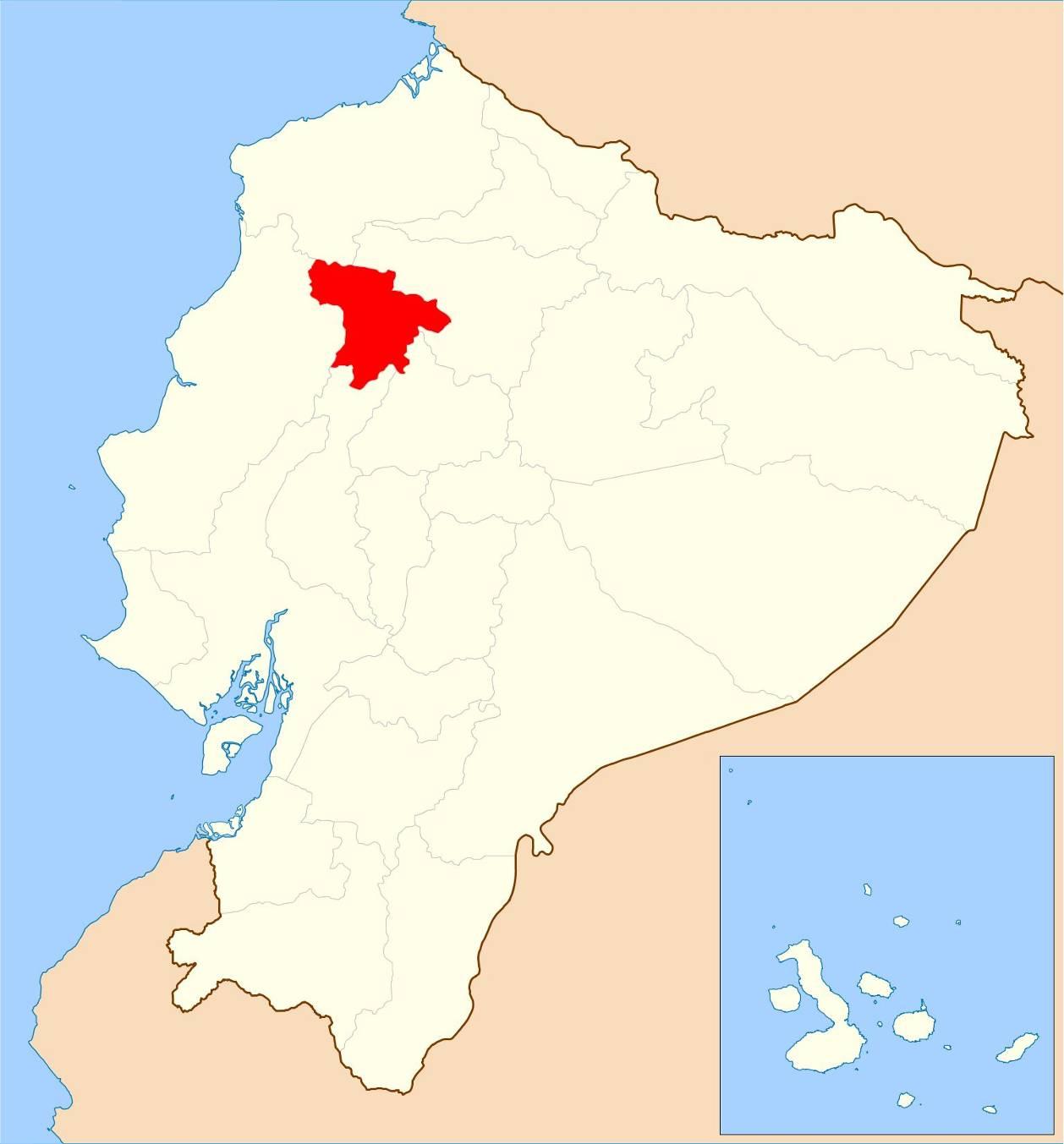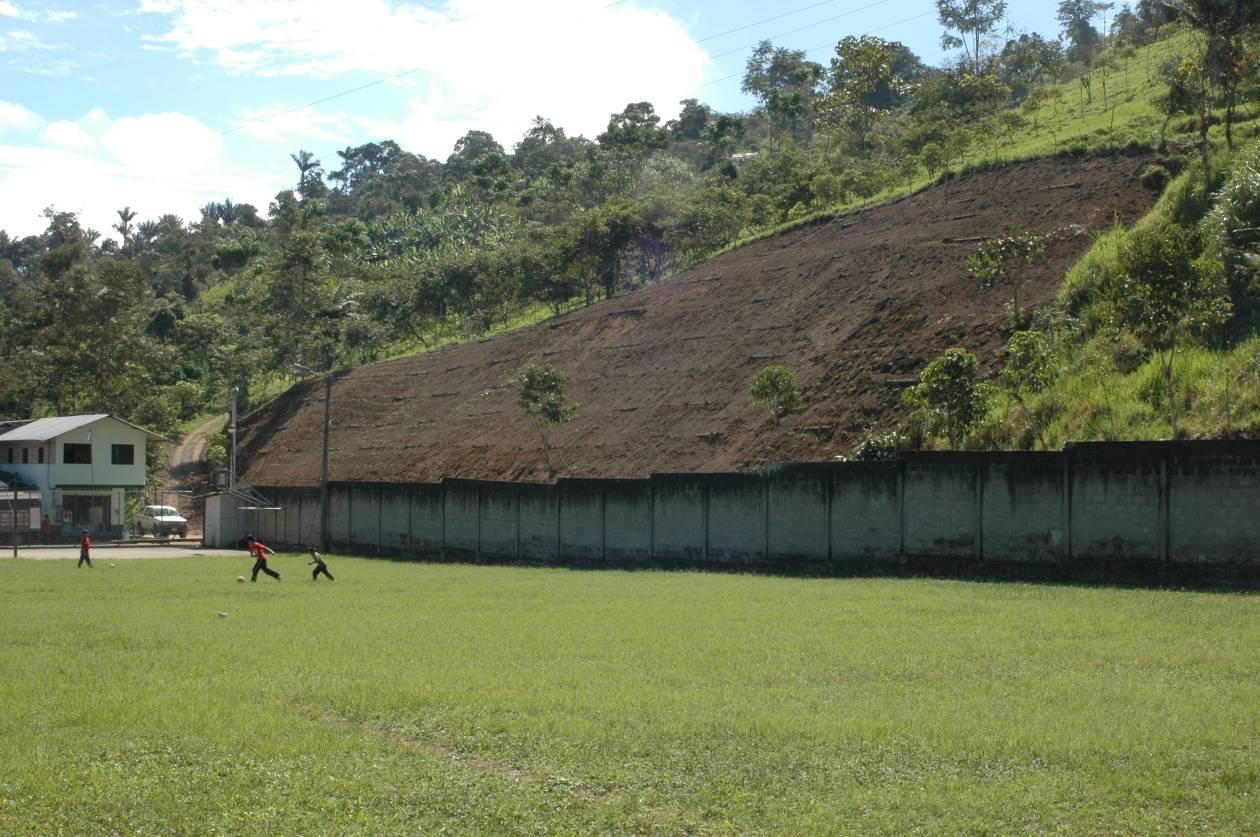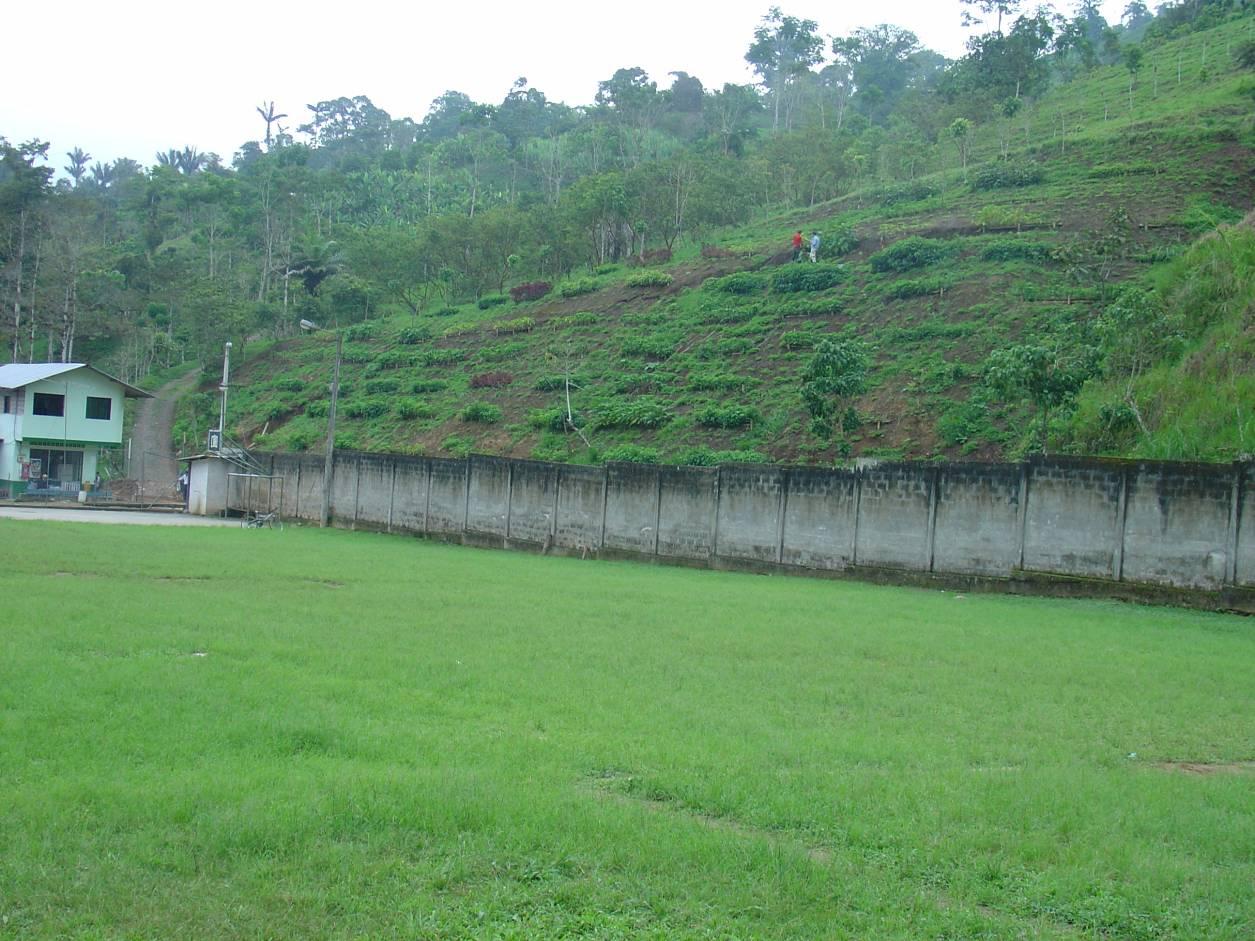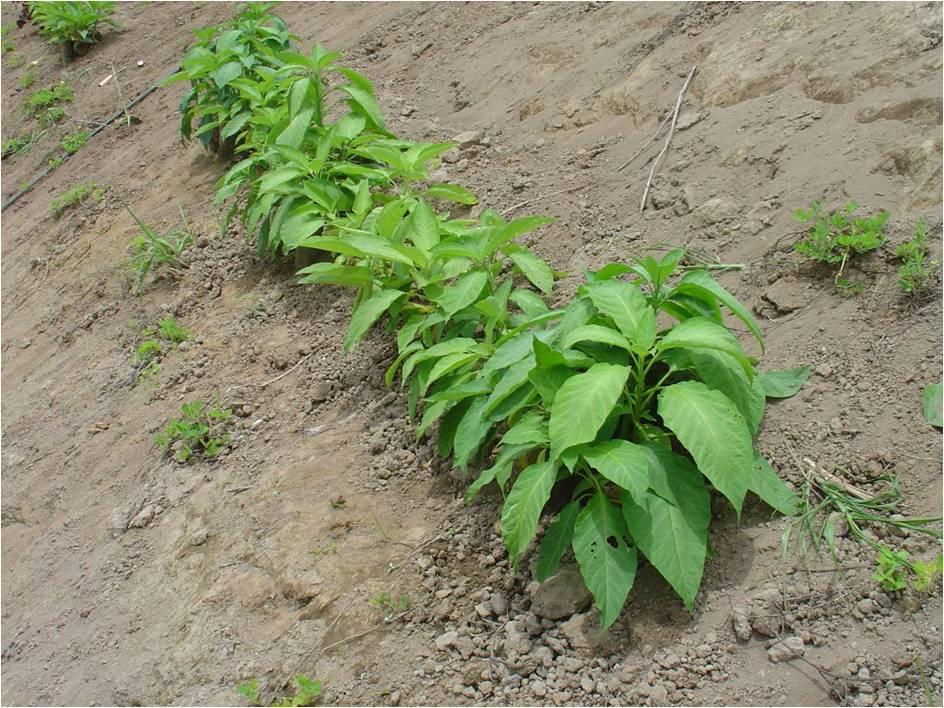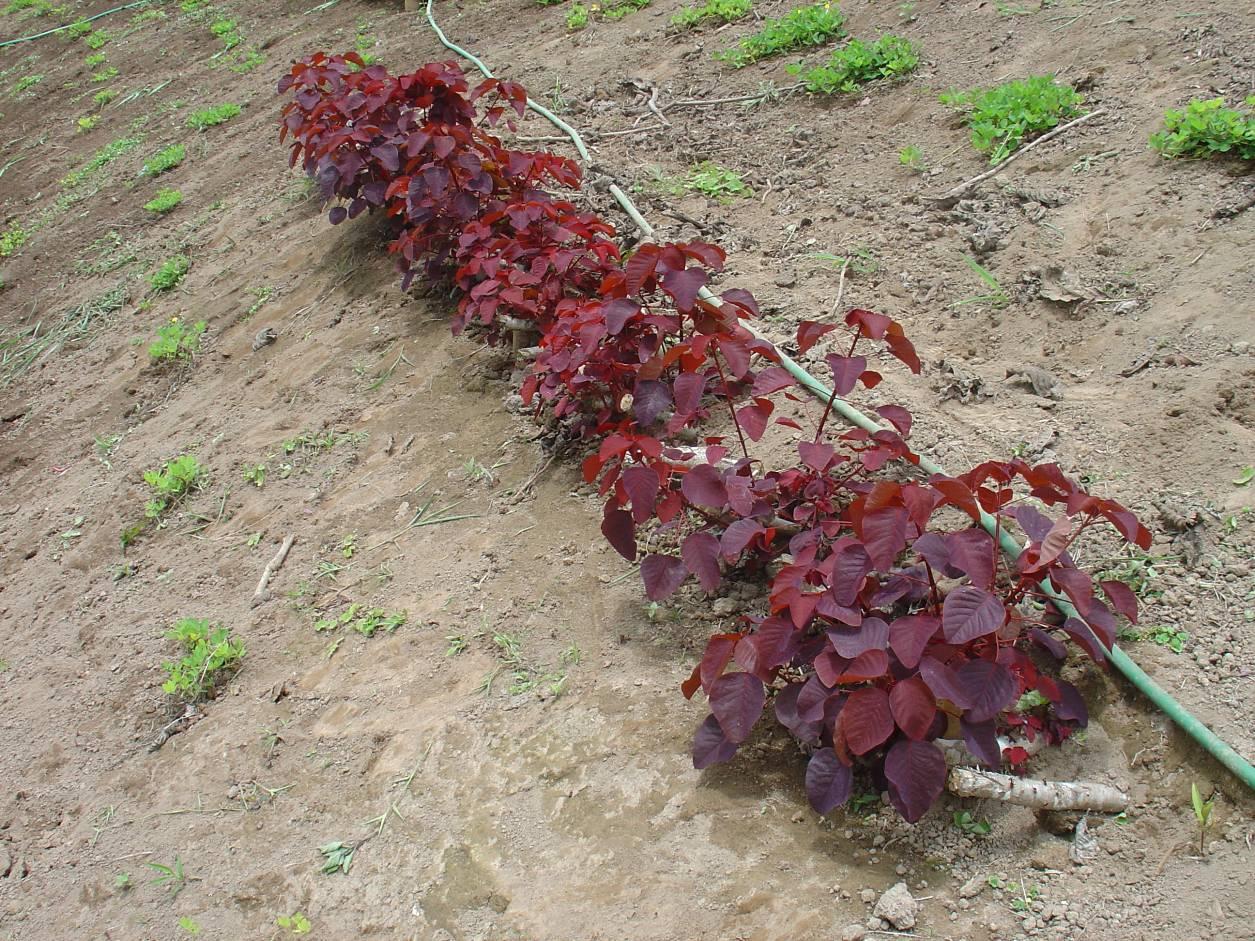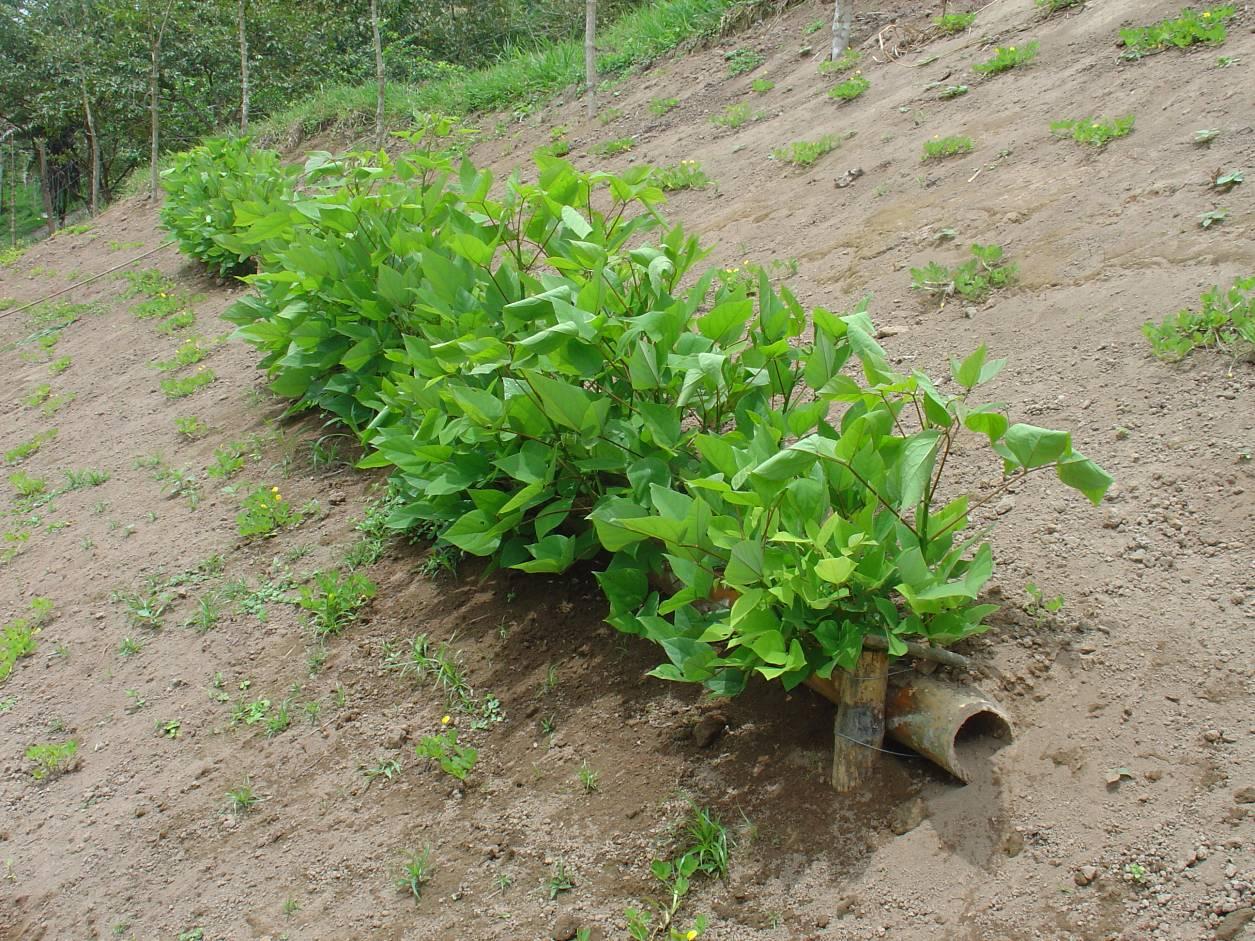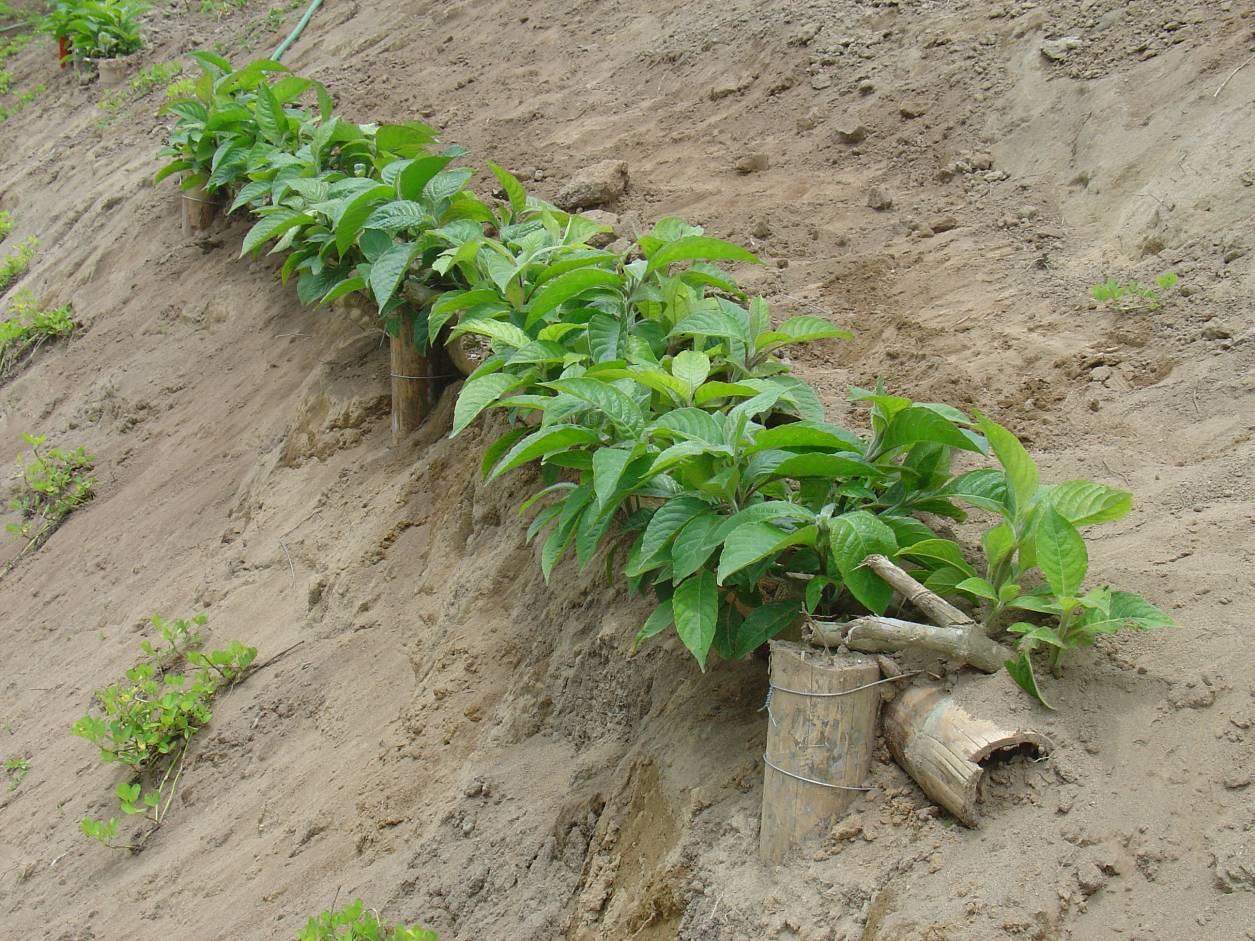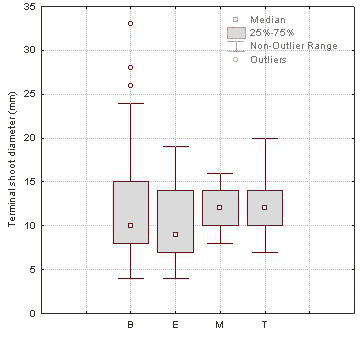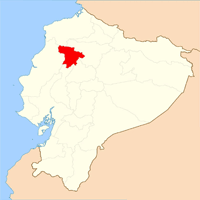
Soil bio-engineering for watershed management and disaster mitigation in Ecuador: a short-term species suitability test
iForest - Biogeosciences and Forestry, Volume 6, Issue 2, Pages 95-99 (2013)
doi: https://doi.org/10.3832/ifor0636-006
Published: Feb 07, 2013 - Copyright © 2013 SISEF
Technical Reports
Abstract
This paper reports a soil bio-engineering technical assessment program conducted in the Santo Domingo, Ecuador region. Autochthonous plant species survivorship and vegetative growth was evaluated in a short-term palisade experimental regime. Among the four species evaluated, Brugmansia versicolor, Malvaviscus penduliflorus, and Trichanthera gigantea performed well, evidenced by > 70% survivorship, however Euphorbia cotinifolia exhibited increased mortality (59%). Significant differences and notable variability in terminal shoot length and stem diameter among species indicated further study is warranted in growth parameters.
Keywords
Soil bio-engineering, Ecuador, Watershed Management, Disaster Mitigation
Introduction
Landslides, flooding, and erosion are among the most threatening natural hazards in tropical and sub-tropical countries (e.g. [12], [9]). Soil bio-engineering techniques are considered important tools to combat erosion, shallow land-slides, bank instability, desertification, and drought ([24]). Gray & Sotir ([6]) provided evidence these techniques contributed to soil strength, with positive influences on geotechnical, hydrological, and hydraulic soil characteristics. Lasting beneficial effects on soil physical and chemical properties were reported in other studies (e.g., [25], [10], [18]). It is clear soil bio-engineering methods are a low cost, environmentally conscience, and effective solution for even large-scale erosion control, and riverbank and slope protection.
Soil bio-engineering has been implemented frequently in Europe ([3]), and has also been successful in developing countries, including Nepal ([4], [5], [8], [1], [19]), Brazil ([26]), Colombia ([22]), Ethiopia ([20]), and Nicaragua ([14], [15]).
Once soil bio-engineering techniques are defined, appropriate plant species selection is based on the following factors: (i) function plan (catch, armour, reinforce, anchor, and support or drain, among other components); (ii) site characteristics (physical environment, climate, soil type, moisture condi- tions); and (iii) regional economic and social criteria (e.g., [23], [21], [16], [1], [11]).
In the framework of the “Disaster Risk Reduction in Santo Domingo de los Tsáchilas” (EU-DIPECHO) project, the present study tested the suitability of autochthonous species, recommended by local residents and experts, to establish soil bio-engineering installations in Ecuador. Our project was characterized by a strong involvement of local communities, as we shared with local people the choice of the experimental site, soil bio-engineering installations, and all monitoring procedures; we also trained people to soil bio-engineering techniques. We think this is vital because local people are one of the stakeholders, and this involvement makes it their project.
Study area, experimental design, and monitoring procedures
The town of Santo Domingo is located in Santo Domingo de los Tsachilas Province (Fig. 1) in north-central Ecuador, at 655 m a.s.l. The climate is sub-tropical, air temperatures range from 18 to 26 °C, and annual precipitation is 4260 mm, which peaks in January and April; 6.5% of the area is tropical forest, 62.9 % pasture, and 30.9 % cultivated lands. The region is prone to natural hazards, particularly landslides, which often cause human life casualties. Road interruption is common, complicating emergency medical and evacuation measures. Pastures are often on steep slopes, increasing the risk of massive erosive processes ([15]).
Assessment of soil bio-engineering installations was conducted at several urban and rural area sites in Santo Domingo. Here we report the results obtained from the experimental site “San Miguel de Lelia” (lat. 0°20’08” S, long. 79°00’05” W, 870 m a.s.l.), which was chosen based on the local community’s perception of the project utility, site accessibility, and on-going erosional processes.
The experimental area (86 x 26 m) is located on an east-southeast facing re-profiled road slope (inclination: 36°), with high sub-surface water availability. Soil is silty-clay sub-alkaline (pH 6.1) with low organic matter content (1.1%), NH4 = 6.8 ppm, P = 4.7 ppm, and K = 0.65 meq/100g (Fig. 2, Fig. 3, Fig. 4).
We involved the local communities and experts to provide the following criteria to choose appropriate plant species for this bio-engineering assessment ([13], [14]): (i) autochthonous plant species, with high potential for propagation from stem cuttings; (ii) wide tolerance to variable soil conditions; and (iii) moderate size at maturity. Local people were also involved and properly trained for the experimental design, soil bio-engineering installation, and monitoring procedures. This activity took place in the framework of a cooperative agreement with the local institutions.
The following species were tested: Brugmansia versicolor Lagerh (Solanaceae, local common name: Guanto - Fig. 5); Euphorbia cotinifolia L. (Euphorbiaceae, local common name: Lechoso - Fig. 6); Malvaviscus penduliflorus DC. (Malvaceae, local common name: Cucarda - Fig. 7); and Trichanthera gigantea (Humb. & Bonpl.) Nees (Acanthaceae, local common names: Nacedero, quiebrabarriga, inchabarriga - Fig. 8). All species have been used for many years by the local population.
Fig. 5 - Stem diameter at terminal shoot base for Brugmansia versicolor (B), Euphorbia cotinifolia (E), Malvaviscus penduliflorus (M) and Trichanthera gigantea (T), 5 months after live palisade construction.
Plant species performance was assessed in a live palisade experiment constructed with local bamboo (caña guadua), and grass transplants at the San Miguel de Lelia experimental site (Fig. 2, Fig. 3, Fig. 4). One hundred cuttings from each species were planted in July 2010, using standard planting techniques. Plant cuttings were collected in the immediate surroundings. Initial cutting length was the same (60 cm) for all species. Average stem diameter for each species was as follows: B. versicolor 27 ± 9.27 mm (mean ± standard deviation); E. cotinifolia 33 ± 7.04 mm; M. penduliflorus 19 ± 5.06 mm); and T. gigantea 32 ± 7.37 mm. At three dates (August, September, and December 2010), the following traits were measured: survival rate (sprout percent from cuttings); terminal shoot length; and stem diameter at terminal shoot base. Terminal shoot length and stem diameter are considered important traits that correlate with root system development, and therefore reflect plant capacity to serve as soil reinforcement ([2]).
Results
Overall, species survivorship from planted cuttings was 87%, 86%, and 73% after one, two, and five months, respectively. Survival rates after five months for individual species were as follows: B. versicolor, 88%; E. cotinifolia, 41%; M. penduliflorus, 92%; and T. gigantea, 73%. Chi-square tests showed a significantly (P < 0.01) lower survivorship between E. cotinifolia and other species. Overall, B. versicolor, M. penduliflorus, and T. gigantea survivorship performance (survival rate exceeding 70%) was more than satisfactory ([8]). E. cotinifolia is naturally distributed on well-drained soils; therefore the low survivorship (41%) can likely be explained by quite high subsurface water content on the experimental slope.
Average terminal shoot length and stem diameter values are reported in Tab. 1, and a box plot comparison is given in Fig. 9 and Fig. 10. M. penduliflorus exhibited the highest vegetative performance in shoot length and stem diameter (i.e., greatest shoot length and stem diameter increases). Results indicated notable within-species variability for both traits in B. versicolor, which will be investigated in a future trial.
Tab. 1 - Terminal shoot length and stem diameter at terminal shoot base (mean ± standard deviation, n=88, 41, 92, and 73 for B. versicolor, E. cotinifolia, M. penduliflorus, and T. gigantea, respectively) five months after palisade construction.
| Parameter | B. versicolor | E. cotinifolia | M. penduliflorus | T. gigantea |
|---|---|---|---|---|
| Terminal shoot length | 40.41 ± 28.19 | 58.10 ± 25.35 | 71.80 ± 13.50 | 40.82 ± 11.38 |
| Stem diameter at term. shoot base | 12.07 ± 5.87 | 10.12 ± 3.83 | 11.95 ± 2.20 | 12.40 ± 2.75 |
Fig. 10 - Terminal shoot lengths for Brugmansia versicolor (B), Euphorbia cotinifolia (E), Malvaviscus penduliflorus (M) and Trichanthera gigantea (T), 5 months after live palisade construction.
A non-parametric Kruskal-Wallis test was performed, which detected significant differences (P < 0.05) among species in terminal shoot lengths. Post-hoc comparisons were subsequently conducted using Least Significant Difference (LSD) criterion. Results showed significant (P < 0.05) differences between B. versicolor, and E. cotinifolia and M. penduliflorus; and between T. gigantea, and E. cotinifolia and M. penduliflorus. Kruskal-Wallis test results also showed significant differences (P < 0.05) in shoot diameter among the four species. However, post-hoc LSD comparisons only revealed a significant difference (P < 0.05) between E. cotinifolia and T. gigantea.
Conclusions
Our short-term assessment provided a practical assessment of local species suitability for soil bio-engineering work in the Santo Domingo Ecuadorian tropical region. However, it is worth noting that given the large number of biotic and abiotic factors (e.g., soil conditions, drought, competition, slope stability, herbivory, and parasites) that can affect plant viability and vegetative performance over time ([7], [27], [17], [21]), it is highly advisable to plan long-term experiments under different environmental conditions.
Acknowledgements
This work was funded by the EU project “Reducción de riesgos por desastres en Santo Domingo de los Tsáchilas” (DIPECHO). We acknowledge collaboration with the non-governmental organization CRIC and a Cooperative Agreement with the local institutions. Dr. Carlos Cerón de la Universidad Central del Ecuador and Dr. Paul A. Fryxell of the University of Texas assisted in species identification. We thank also SNGR (National Agency for Risk Management), and the technicians of Santo Domingo and Quito municipalities.
References
Gscholar
Gscholar
Gscholar
Gscholar
Gscholar
Gscholar
Gscholar
Gscholar
Gscholar
Gscholar
Gscholar
Online | Gscholar
Online | Gscholar
Gscholar
Gscholar
Gscholar
Authors’ Info
Authors’ Affiliation
Corresponding author
Paper Info
Citation
Preti F, Petrone A (2013). Soil bio-engineering for watershed management and disaster mitigation in Ecuador: a short-term species suitability test. iForest 6: 95-99. - doi: 10.3832/ifor0636-006
Academic Editor
Roberto Tognetti
Paper history
Received: Aug 08, 2012
Accepted: Oct 19, 2012
First online: Feb 07, 2013
Publication Date: Apr 02, 2013
Publication Time: 3.70 months
Copyright Information
© SISEF - The Italian Society of Silviculture and Forest Ecology 2013
Open Access
This article is distributed under the terms of the Creative Commons Attribution-Non Commercial 4.0 International (https://creativecommons.org/licenses/by-nc/4.0/), which permits unrestricted use, distribution, and reproduction in any medium, provided you give appropriate credit to the original author(s) and the source, provide a link to the Creative Commons license, and indicate if changes were made.
Web Metrics
Breakdown by View Type
Article Usage
Total Article Views: 55956
(from publication date up to now)
Breakdown by View Type
HTML Page Views: 46320
Abstract Page Views: 2906
PDF Downloads: 5020
Citation/Reference Downloads: 27
XML Downloads: 1683
Web Metrics
Days since publication: 4712
Overall contacts: 55956
Avg. contacts per week: 83.13
Article Citations
Article citations are based on data periodically collected from the Clarivate Web of Science web site
(last update: Mar 2025)
Total number of cites (since 2013): 7
Average cites per year: 0.54
Publication Metrics
by Dimensions ©
Articles citing this article
List of the papers citing this article based on CrossRef Cited-by.
Related Contents
iForest Similar Articles
Research Articles
Strong relationships between soil and vegetation in reference ecosystems of a riparian Atlantic rainforest in the upper Doce River watershed, southeastern Brazil
vol. 16, pp. 226-233 (online: 17 August 2023)
Research Articles
Method for the analysis of the relationship between forest cover and streamflow in watersheds
vol. 14, pp. 344-352 (online: 21 July 2021)
Research Articles
Diversity, distribution and vegetation assessment in the Jahlmanal watershed in cold desert of the Lahaul valley, north-western Himalaya, India
vol. 3, pp. 65-71 (online: 17 May 2010)
Short Communications
The Polish landscape changing due to forest policy and forest management
vol. 2, pp. 140-142 (online: 30 July 2009)
Review Papers
Large-scale effects of forest management in Mediterranean landscapes of Europe
vol. 6, pp. 342-346 (online: 29 August 2013)
Research Articles
Evaluation of urban forest landscape health: a case study of the Nanguo Peach Garden, China
vol. 13, pp. 175-184 (online: 02 May 2020)
Editorials
Adaptation of forest landscape to environmental changes
vol. 2, pp. 127 (online: 30 July 2009)
Review Papers
Post-fire soil hydrology, water erosion and restoration strategies in Andosols: a review of evidence from the Canary Islands (Spain)
vol. 9, pp. 583-592 (online: 17 March 2016)
Research Articles
Communicating spatial planning decisions at the landscape and farm level with landscape visualization
vol. 7, pp. 434-442 (online: 19 May 2014)
Research Articles
Soil microorganisms at the windthrow plots: the effect of post-disturbance management and the time since disturbance
vol. 10, pp. 515-521 (online: 20 April 2017)
iForest Database Search
Search By Author
Search By Keyword
Google Scholar Search
Citing Articles
Search By Author
Search By Keywords
PubMed Search
Search By Author
Search By Keyword

